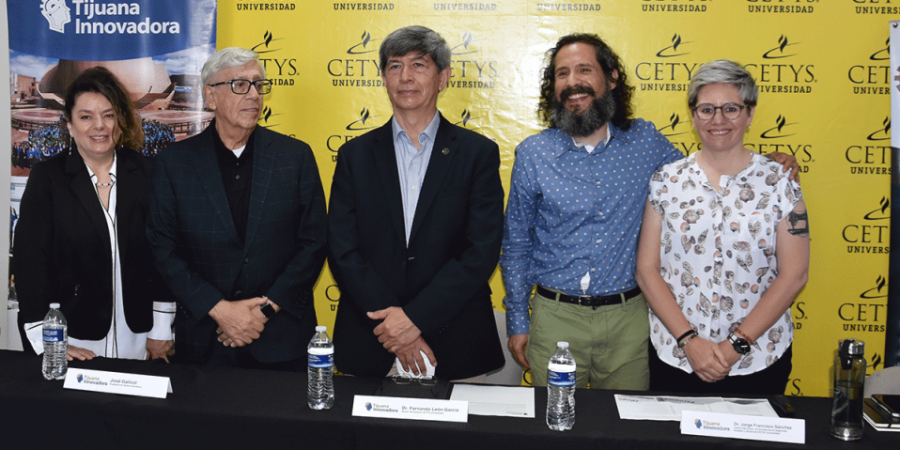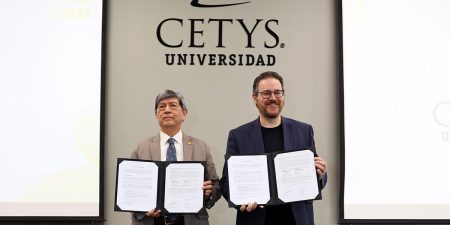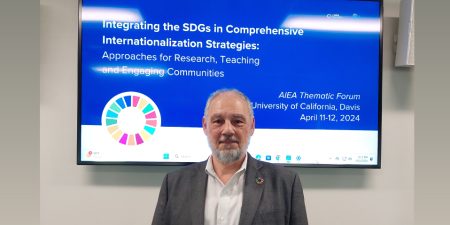CETYS University researchers mapped the entrepreneurial ecosystem of cultural and creative industries in Tijuana; this was done in collaboration with Tijuana Innovadora and the Center for International Private Enterprise (CIPE). This study is a pioneering effort for the growth of the different industries, as well as for detecting areas of opportunity and strengths within the group.
Dr. Fernando León-García, President of the CETYS University System, thanked the leadership of Tijuana Innovadora, who were great promoters of developing said work through an agreement, in cooperation with CIPE, to foster a democratic culture, a spirit of entrepreneurship, and youth participation in the creative economy.
“The project was possible thanks to CETYS University experience, through its researchers who work on innovation in cultural and creative entrepreneurship, a line that will continue to be developed because of its strategic relevance for the binational CaliBaja region,” he said.
“It is very important to identify these actors and the impact they are generating; they are changing the city. We must remember that the Tijuana-San Diego region will be the World Design Capital (WDC) from 2020-2024. We will be the venue; How much design, creativity, and effort do we want the world to see? What is Tijuana, and what has been done here? Therefore, the information that emerges from said mapping is important,” declared Mr. José Galicot, President of Tijuana Innovadora.
Dr. Jorge Francisco Sánchez, Coordinator of the Center of Excellence for Social Sciences and Humanities at CETYS, pointed out that the research was carried out with researchers from the Institute for Innovation, Entrepreneurship, and Social Change (INNSIGNIA).
The aim of the research is to characterize the ecosystem of the creative industries, as well as to carry out a situational analysis focused on the processes of inclusion of youth and gender, and to identify actors and mechanisms in the sector,” said Dr. Jorge Francisco Sánchez.
Dr. Flavio Olivieri, a representative of the Center for International Private Enterprise (CIPE), showed that this instrument will encourage the participation of young people and women in cultural and creative industries. “It is the first step, but there is still a lot to do.”
Highlights and Salient Findings
The study allows for classifying the strategic actors that make up the ecosystem of creative and cultural industries in Tijuana (ICC), as well as mechanisms that contribute to the sustainability and future financing of the sector.
The work refers to the binational Tijuana-San Diego region as the largest border urban agglomeration between Mexico and the United States, housing 34% of the total population of the international area. In Tijuana, the ICC reached a value of 11 million 757 thousand pesos, which represents 7.5% of the value of all economic activities carried out in the municipality.
Interregional Alliances. Regarding the participation of foreign capital in companies linked to the ICC, 17.02% have this type of investment, while 82.98% do not. The cross-border dynamics of these companies are illustrated by the inputs they obtain abroad, including education and advice, followed by supplies and technology.
Intersectoral links. Regarding the sector to which the respondents belong, the vast majority belong to the productive sector (58.70%), followed by the social sector (15.22%), academic (6.52%), and government (4.35%). 15.22% showed belonging to another sector, and the following answers were indicated: cultural, independent-educational, art, and cultural-musical.
Dr. Jorge Francisco Sánchez, Coordinator of the Center of Excellence for Social Sciences and Humanities
The survey found that more than 40% of young people have used their own capital to promote their activity in the CCIs, while 29.58% have been supported with scholarships, and 21.13% have not participated in any of the promotion models.
To read the complete mapping, you can access it HERE.

Study and Mapping of Cultural and Creative Industry Ecosystems in Tijuana









Leave your comment